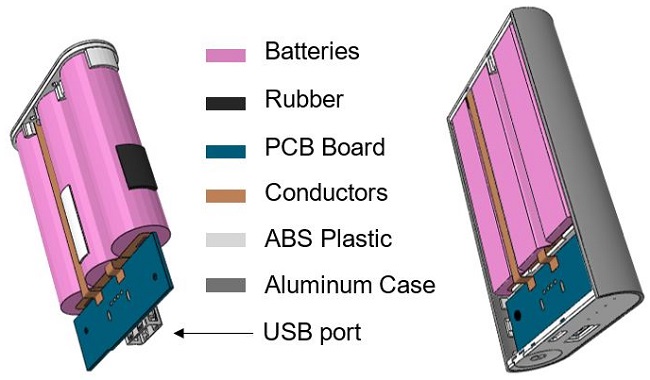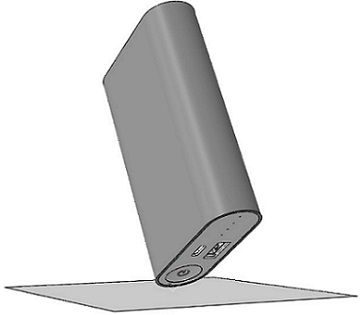Technical Challenge
From smartphones and cameras to wireless headphones and battery packs, portable electronics proliferate. Consumers have come to expect excellent resilience to device drops, putting pressure on manufacturers to test and optimize their designs thoroughly.
Most modern devices have a high degree of complexity that increases simulation complexity as well as the effort required for reliability assessment, geometry and material optimization, and user safety.
Veryst Solution
We developed a nonlinear, explicit dynamic finite element (FE) model to determine the performance of a battery pack dropped to the ground. The battery pack consists of the following components:
- lithium-ion batteries
- Printed circuit board (PCB)
- aluminum case
- steel screws
- ABS (acrylonitrile butadiene styrene) plastic caps and buttons
- foam and rubber pads
- conductors
- adhesive
- USB port
We collected high rate test data of the materials using our custom-designed drop tower material test system. We selected and calibrated advanced material models for the ABS, foam, and rubber components. We then simulated a drop event from 3.3 m (8 m/s or 18 mph impact velocity) on the corner of the case, presenting a severe-case impact event. Specifically, we simulated contact between the internal components to capture all interactions between the bodies and then monitored the internal stresses.
Most of the internal components survived the stress from the drops, but the case experienced significant plastic deformation. Using insights from the simulation, we were able to make design changes that increased the resilience of the case and reduced the accelerations experienced by the electronic components.
Conclusion
Veryst simulated the impact performance of an external battery pack with complex materials and geometries, and provided design recommendations to increase survivability. These same methods are used to simulate drop events of other electronics, consumer products and appliances, medical devices, and athletic equipment.
These FE models can accelerate the design optimization process, ensure the structural integrity of every component, and predict the ability of such devices to survive an impact.

